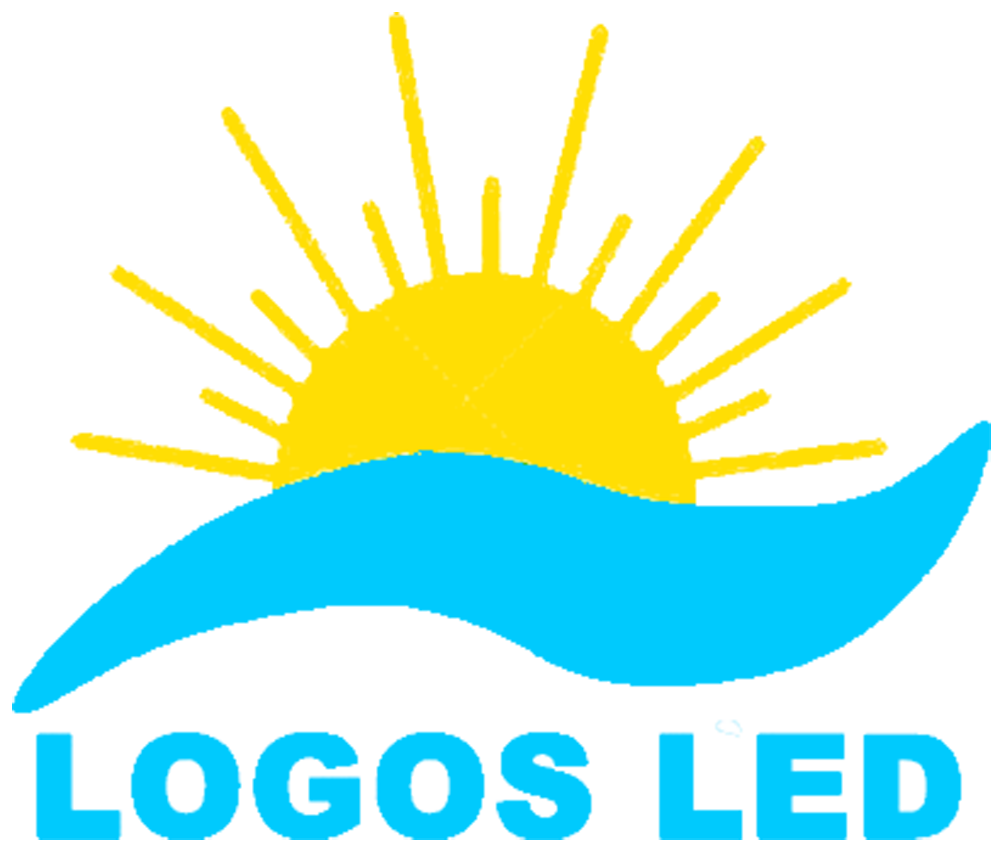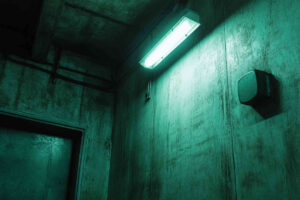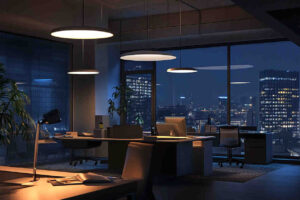When it comes to lighting up sports facilities—whether it’s a massive stadium or a local basketball court—LED technology is the go-to solution. Why? Because it delivers unmatched brightness, energy efficiency, and durability. Athletes and spectators alike benefit from clear visibility, and venue owners see huge savings on energy and maintenance.
But here’s the deal: Not all sports lighting is the same. The size of the facility, competition level, and layout all affect fixture selection, design, and cost. If you want a system that meets official lighting standards and ensures top-tier performance, working with an experienced lighting professional is a must.
This guide will break down everything from cost estimates to lighting calculations and help you understand why partnering with the right lighting specialist makes all the difference.
Table of Contents
How Much Does LED Outdoor Sports Lighting Cost?

LED sports lighting costs vary based on wattage, pole height, beam angles, and installation complexity. You’re looking at $1,000 to $5,000 per fixture, and a full installation could range anywhere from $30,000 to $500,000+, depending on the project’s scope.
1. Costs by Sports Facility Type
- Tennis courts (4-8 fixtures): $20,000 – $50,000
- Basketball courts (6-12 fixtures): $30,000 – $80,000
- Football fields (40+ fixtures): $80,000 – $200,000
- Professional stadiums (100+ fixtures): $250,000+
2. Number of LED Fixtures Needed
- 100W-300W LEDs for small fields
- 500W-2000W LEDs for large stadiums
- Example: A tennis court may need 6-12 fixtures, while a football stadium could require 40-100+ fixtures.
3. Pole Height and Placement
- 30ft-40ft poles → Best for tennis and basketball courts
- 60ft-80ft poles → Ideal for stadium lighting
4. Required Lux Levels by Sport
- Recreational fields: 200-300 lux
- Amateur competition: 500 lux
- Professional stadiums: 1000+ lux
5. Installation and Labor Costs
- Basic installation: $10,000 – $50,000+
- Additional costs for wiring, trenching, and pole foundations
Estimated Costs for LED Outdoor Sports Lighting
| Component | Cost Estimate (USD) |
|---|---|
| LED Fixtures (Per Unit) | $1,000 – $5,000 |
| Poles (Per Unit) | $2,000 – $10,000 |
| Installation | $10,000 – $50,000+ |
| Electrical Wiring & Labor | $5,000 – $20,000 |
| Total Project Cost | $30,000 – $500,000+ |
How Do You Calculate Outdoor Lighting?
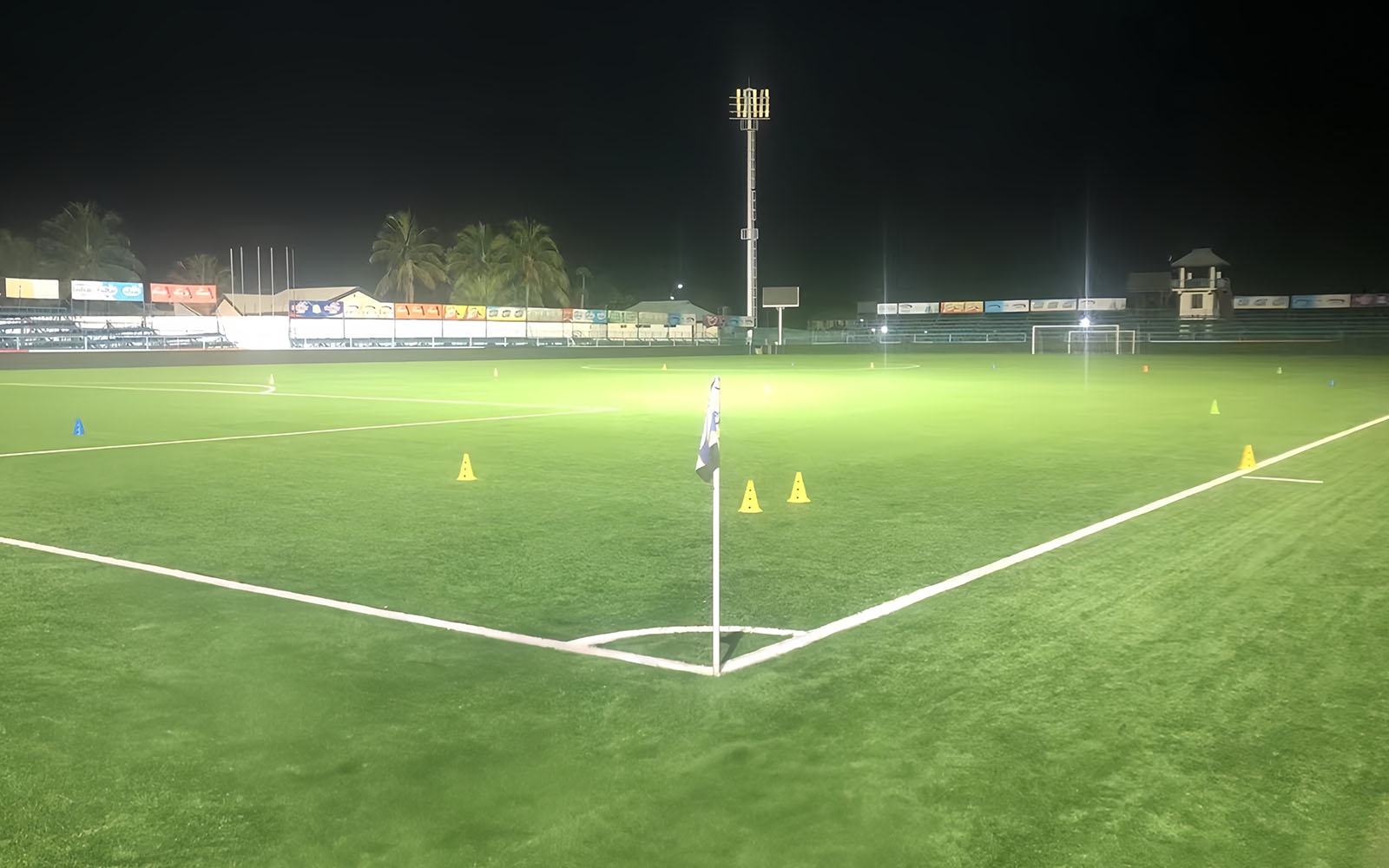
Lighting calculations help ensure proper brightness, efficiency, and compliance with sports lighting standards. Here’s how it’s done:
Step 1: Determine the Required Lux Levels
- Recreational play → 200-300 lux
- Amateur competition → 500 lux
- Professional stadiums → 1000+ lux
Step 2: Calculate the Total Lumen Output
Use this formula:
Lumen Output = Lux × Area (m²)
Example:
- Tennis court (23.77m × 10.97m) = 260m²
- If required lux = 300, then Lumen Output = 300 × 260 = 78,000 lumens
Step 3: Choose LED Wattage and Beam Angles
- 100W-300W LEDs for small courts
- 500W-1500W LEDs for large stadiums
Step 4: Determine the Number of Fixtures
- Total lumen output ÷ lumen output per fixture = Number of fixtures needed
- Example: A 500W LED produces 60,000 lumens → A 78,000-lumen tennis court needs 2 fixtures.
Step 5: Optimize Pole Placement and Uniformity
- Avoid shadow areas
- Use asymmetric beam angles for even light distribution
Applications of Outdoor LED Sports Lighting
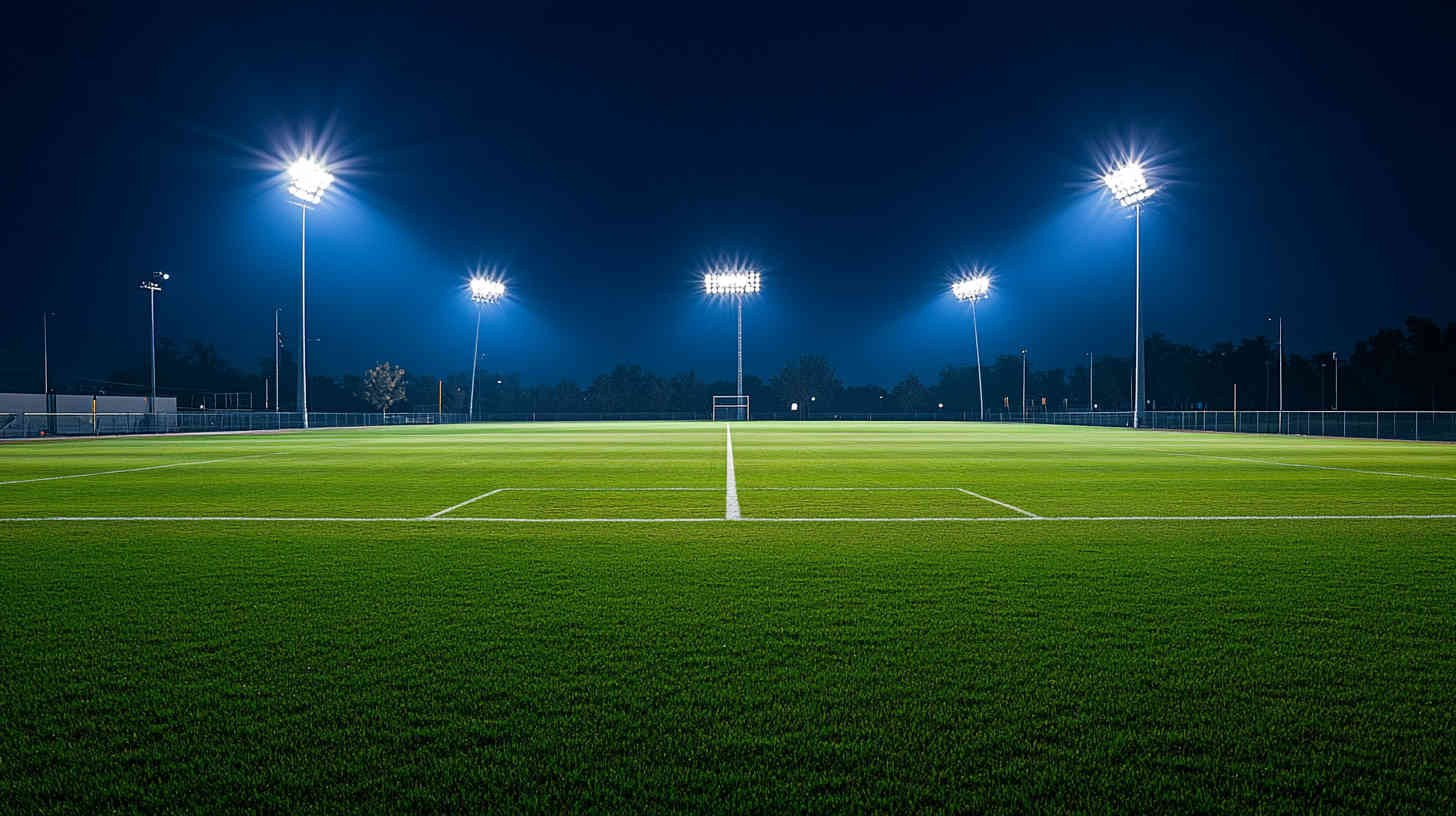
LED sports lighting is used everywhere—from massive stadiums to backyard courts. It ensures clear visibility, safety, and compliance with industry standards.
1) Outdoor Stadium Lighting
Large stadiums need high-power LED lighting that delivers uniform brightness, minimal glare, and true color rendering. For televised events, the lighting must also meet broadcast standards.
Key considerations:
- High lumen output for full coverage
- Glare control for player and spectator comfort
- Flicker-free lighting for slow-motion replays
- Smart lighting control for adjustable brightness
2) Outdoor Sports Field Lighting
From soccer fields to rugby pitches, outdoor sports fields need powerful LED floodlights that offer even light distribution without spillage.
Key considerations:
- Weatherproof fixtures (IP65 or higher)
- Custom beam angles to reduce glare
- Compliance with league regulations
- Long lifespan with low maintenance
3) Outdoor Court Lighting
Tennis, basketball, and volleyball courts need anti-glare, high-quality lighting to ensure players can track fast-moving balls without distractions.
Key considerations:
- Low-glare optics for player comfort
- Energy-efficient LED fixtures to cut costs
- Instant-on functionality after power interruptions
- Custom layouts for different court sizes
Sports-Specific Installation Considerations
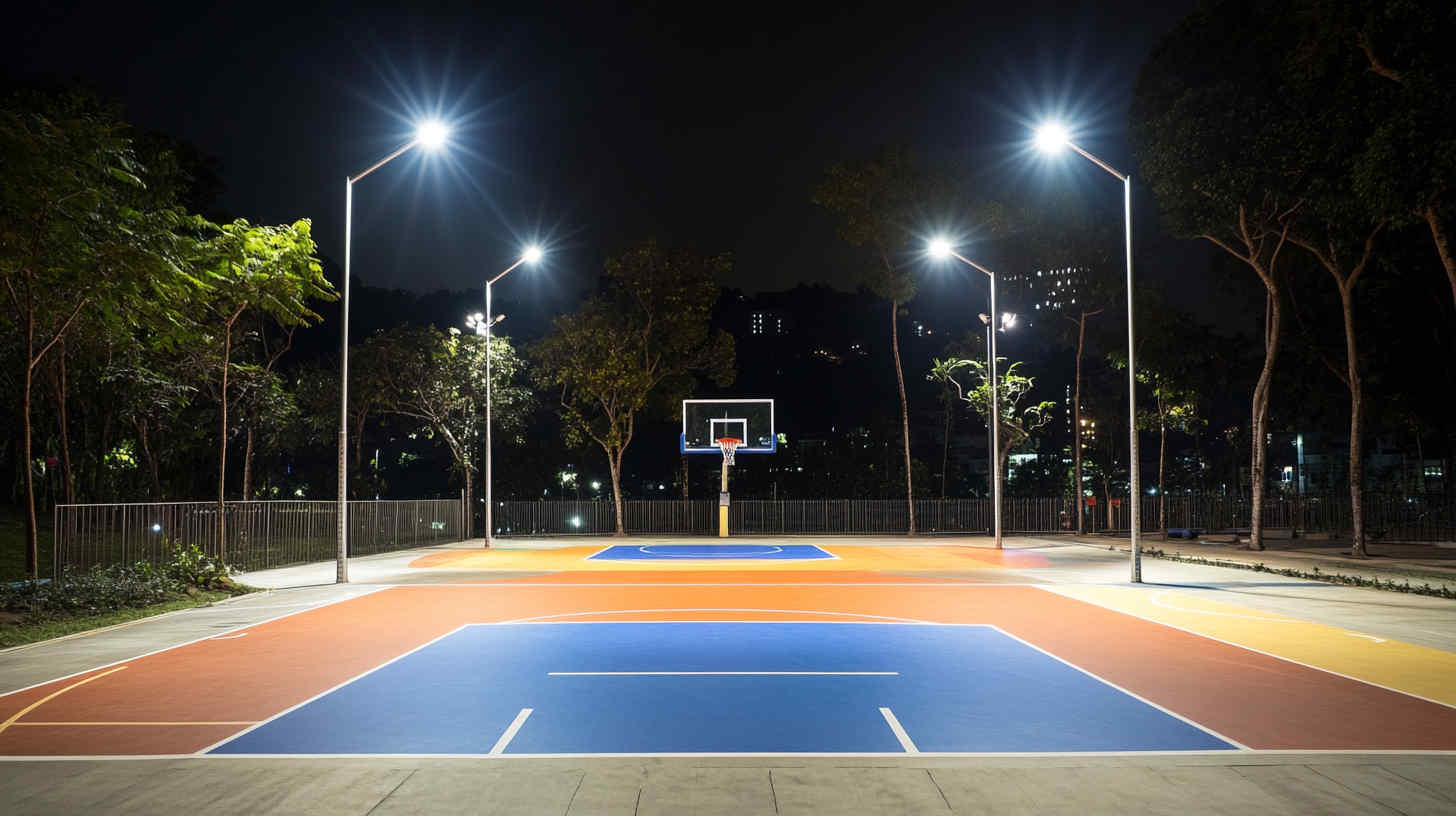
When setting up outdoor LED sports lighting, it’s not a one-size-fits-all approach. Every sport has different lighting needs based on field size, player speed, ball movement, and viewing angles. These factors impact everything from fixture placement to beam angles. Here’s what you need to know for different sports:
1) Football and Soccer Field Lighting
Football and soccer fields need consistent, uniform lighting across a large playing area. Since these sports involve fast movement and high-flying balls, vertical illumination is just as important as horizontal coverage.
Key considerations:
- High-mast poles to ensure even light distribution
- Reducing shadows and glare, especially for goalkeepers
- Meeting FIFA, UEFA, or NFL lighting standards
- Balancing vertical and horizontal illumination for clear visibility
2) Baseball and Softball Field Lighting
Baseball and softball lighting is tricky because of the unique field layout and fast ball speeds. Players need to track the ball through the air, making vertical illumination and glare control essential.
Key considerations:
- High-lumen LED floodlights for outfield coverage
- Strategic light placement to prevent glare for batters and pitchers
- High CRI (Color Rendering Index) for better ball tracking
- Compliance with MLB, Little League, or local regulations
3) Tennis and Pickleball Court Lighting
Tennis and pickleball courts require balanced lighting that eliminates harsh shadows and glare. Since these are smaller courts, light spillage needs to be minimized to avoid distractions.
Key considerations:
- Symmetrical lighting to maintain consistent brightness
- Anti-glare optics to prevent blinding players
- Meeting USTA and ITF lighting standards
- Reducing light pollution, especially in residential areas
4) Basketball and Volleyball Court Lighting
Fast-paced games like basketball and volleyball need bright, flicker-free lighting for quick movements and precise plays. Since these courts are relatively small, fixture placement is crucial for even coverage.
Key considerations:
- Precision beam angles to control light spread
- Instant-on LED technology for immediate brightness
- High CRI for clear visibility of the ball and players
- Uniform brightness for televised games
5) Running Tracks and Multi-Purpose Sports Fields
Running tracks and multi-use fields need uniform lighting for safe movement. Since these facilities host different sports and events, flexible lighting controls are ideal.
Key considerations:
- Adaptive lighting systems for energy savings
- Even light distribution to eliminate contrast issues
- Weatherproof fixtures for year-round performance
- Meeting IAAF and NCAA lighting standards
Every sport has its own set of lighting requirements, and understanding these details is key to designing an effective system. The right fixture selection, placement, and illumination levels ensure a high-quality experience for both players and spectators.
LED Outdoor Sports Lighting Systems Explained

LED sports lighting is designed to deliver bright, uniform illumination across fields and courts while ensuring safety, energy efficiency, and long-term performance. These systems consist of several key components, including LED fixtures, mounting structures, and control systems.
Key Components of Outdoor Sports Lighting Systems
- LED Fixtures – The primary light source, offering high brightness, energy efficiency, and durability.
- Mounting Structures – Tall poles for large fields (football, baseball) and shorter poles or wall mounts for smaller courts (tennis, basketball).
- Control Systems – Smart lighting features like dimming, scheduling, and remote operation.
- Electrical Wiring & Power Supply – Stable and reliable power infrastructure that meets safety standards.
Mounting Options for Outdoor Sports Lighting
- High-Mast Poles – Used for large fields like football and baseball, ensuring wide coverage with minimal shadows.
- Medium-Height Poles – Ideal for basketball, volleyball, and smaller multi-use courts.
- Wall-Mounted Fixtures – Best for compact courts like tennis and badminton, preventing unnecessary light spill.
Installation Considerations
A well-executed sports lighting installation requires attention to:
- Wattage & Lumen Output – Ensuring the right brightness for the facility size and sport.
- Uniformity & CRI – Even light distribution and accurate color rendering for enhanced gameplay.
- Light Pollution Control – Using anti-glare optics and proper positioning to minimize unwanted light.
- Compliance with Local Regulations – Following sports lighting standards and environmental guidelines.
Why Work with a Professional Lighting Partner?
Sports lighting design is complex, and working with a professional ensures:
- Optimized lighting layouts for each sport
- Compliance with industry standards like FIFA, NBA, and MLB
- Energy-efficient solutions that reduce costs over time
The right LED sports lighting system enhances performance, safety, and efficiency. If you need expert advice, reach out today!
Outdoor Sports Lighting Design Considerations
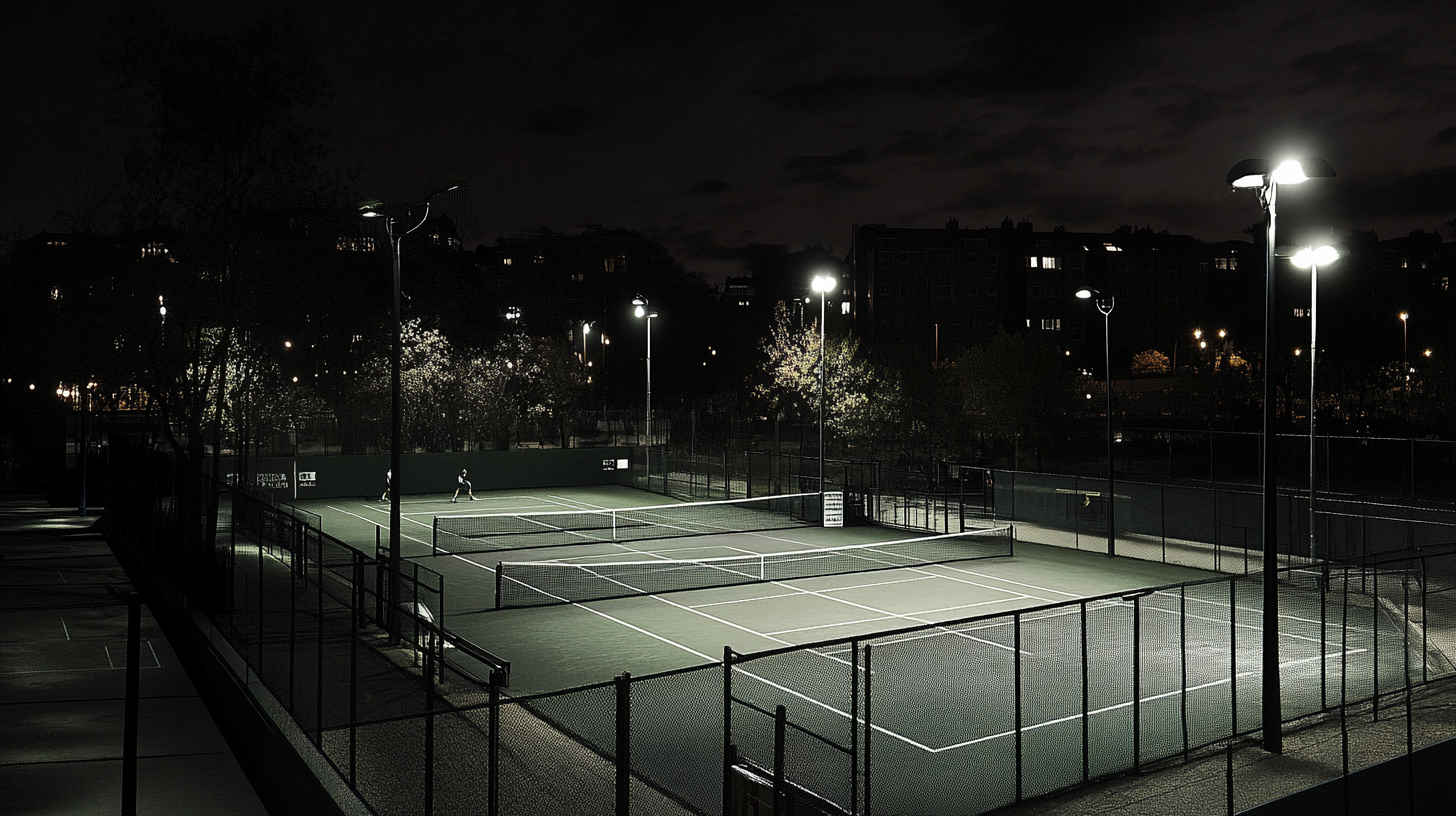
A great outdoor sports lighting system requires careful planning to achieve optimal brightness, safety, and compliance with industry standards. Here’s what to consider:
Competition Level Requirements
Lighting needs vary based on whether the facility is for recreational use or professional play. Governing bodies like FIFA, NBA, and NCAA set strict guidelines for illuminance, uniformity, and glare control.
- Recreational & Community Sports – Moderate brightness with basic uniformity.
- Amateur & Training Facilities – Higher light levels for enhanced visibility.
- Professional Stadiums – Precision lighting with high CRI for broadcast-quality illumination.
Uniformity of Light
Good lighting isn’t just about brightness—it’s about how evenly light is distributed. Uneven lighting creates shadows and glare, making it harder for players to see clearly.
- Uniformity Ratio (U1) – Measures the balance between the minimum and average illuminance.
- Uniformity Ratio (U2) – Compares the minimum and maximum illuminance levels.
Lighting Class / Illumination Level
Different sports and competition levels require specific illumination levels measured in lux. Sports lighting is classified as follows:
- Class I – Professional & International Competitions (750–2000 lux)
- Class II – Club & Semi-Professional Matches (300–750 lux)
- Class III – Recreational & Training Facilities (75–300 lux)
Energy Efficiency
Maximizing brightness while keeping energy costs low is key. LED sports lighting systems should:
- Use high-efficiency LED technology for better lumens per watt.
- Incorporate dimming and smart controls to adjust brightness as needed.
- Feature optimized optics to focus light exactly where it’s needed.
Light Color and Temperature
Color temperature, measured in Kelvin (K), affects visibility and the overall atmosphere of a sports venue.
- 5000K – 6000K (Cool White) – High contrast and sharp visibility for fast-paced sports.
- 4000K (Neutral White) – Balanced brightness for training and practice fields.
- 3000K (Warm White) – Typically used for spectator areas rather than playing fields.
Environmental Impact
Reducing light pollution and glare is crucial for both player comfort and regulatory compliance.
- Glare Control – Shielding and proper beam angles prevent excessive brightness.
- Light Spill Reduction – Ensures surrounding residential areas and wildlife aren’t affected.
- Dark Sky Compliance – Fully shielded fixtures help reduce unnecessary skyglow.
An outdoor sports lighting system that’s well-planned enhances gameplay, safety, and energy efficiency. Taking these factors into account ensures that every facility meets performance and compliance standards.
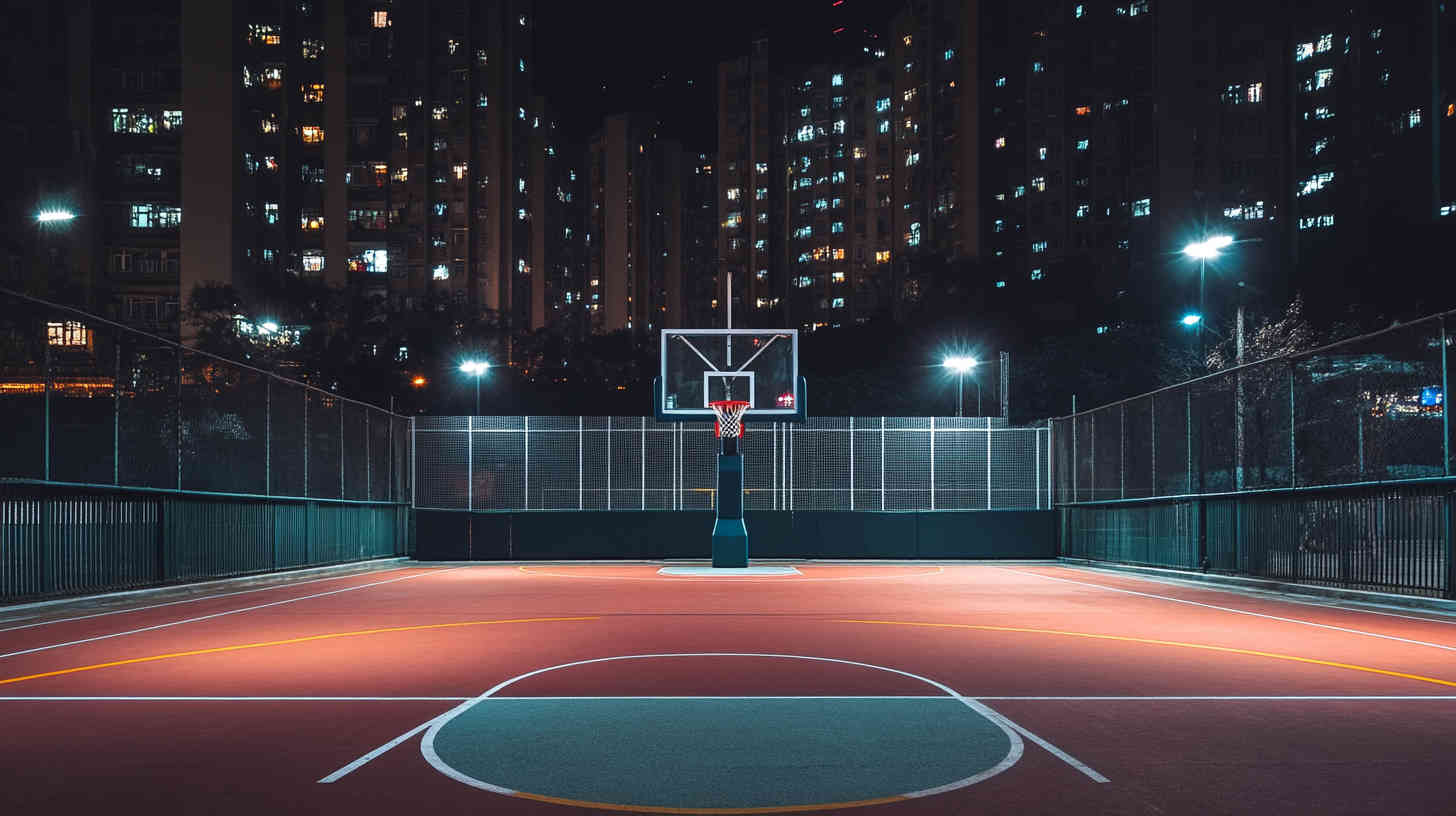
Why Choose LED for Sports Lighting?
- Energy Savings – Uses up to 70% less power than traditional stadium lights.
- Better Visibility – Uniform brightness with anti-glare optics.
- Low Maintenance – LEDs last 50,000+ hours, reducing replacement costs.
- Smart Controls – Dimming and motion sensors optimize energy use.
Choosing the Right Lighting Partner
Outdoor sports facilities require expert lighting solutions to ensure safety and optimal performance. Experienced lighting professionals understand the unique challenges of each sport and design systems that deliver uniform brightness, reduced glare, and minimal light spill.
A well-designed system ensures that athletes perform at their best, spectators enjoy the game, and surrounding areas remain undisturbed.
Conclusion
LED sports lighting is a game-changer, offering superior brightness, lower costs, and energy efficiency. Whether you’re lighting a tennis court, a football field, or a professional stadium, the right lighting setup makes all the difference.
Need expert guidance? Contact us today for a customized LED sports lighting solution!
